
An excerpt from the book Cranky Uncle vs. Climate Change, released Feb 25.
Our human brain is poorly equipped to deal with a threat like climate change. Over millions of years, we’ve evolved to avoid life-threatening dangers like predators jumping out of bushes. We’ve survived by quickly detecting and avoiding immediate, short-term dangers.
In contrast, global warming is a slow-motion disaster happening on a global scale. Our brains aren’t built to respond to planetary crises stretched out over a lifetime. It should come as no surprise that people have trouble appreciating just how dangerous climate change is.

On top of all these difficulties, we are also being hit with a massive wave of misinformation about climate change. Vested interests, political polarization, the global nature of climate change, and misinformation combine to form a perfect psychological storm, preventing people from accepting climate science and supporting climate action.
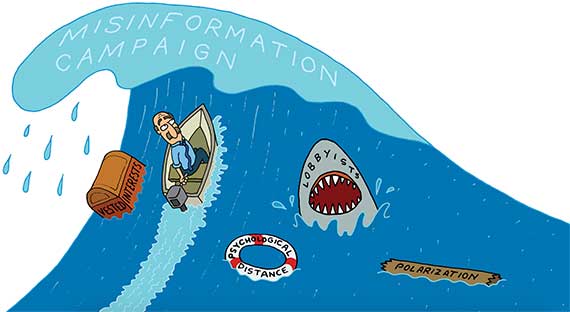
From the public’s point of view, the tsunami of misinformation looks like scientific controversy. We hear experts and contrarians on TV or social media spouting jargon and assume scientists are still undecided on basic questions, like whether humans are causing global warming.
This veneer of controversy conceals the fact that our scientific understanding of human-caused global warming is built on more than a century of research. Scientific confidence is strongest when many different lines of evidence all point to a single conclusion. That’s what we observe with climate change.
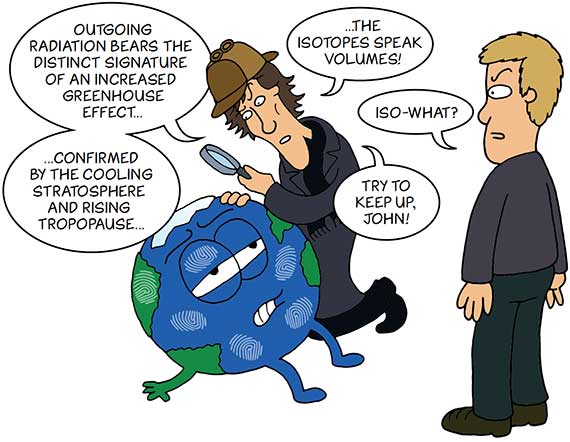
Unique patterns matching human-caused global warming—otherwise known as human fingerprints—have been observed all over our climate. This body of evidence has resulted in overwhelming agreement among climate scientists.
Not only has there been scientific consensus on climate change for decades, there used to be political consensus as well. In the 1980s, George H. W. Bush—head of the Republican Party—pledged to fight climate change.
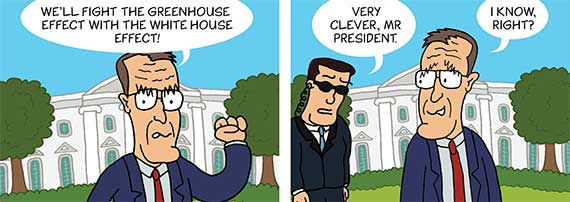
So how did a bipartisan issue turn so partisan? The story begins in the late 1980s. Three physicists began attacking the science linking smoking to cancer, the reality of acid rain, the severity of the ozone hole, and global warming. In short, they tried to discredit any scientific evidence showing that industries were harming the public’s health or the environment.
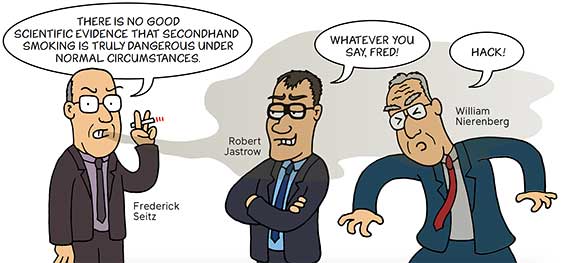
Why did these scientists turn against science? While the obvious suspect is money, it turns out their motives run deeper. They subscribed to a belief system called free market fundamentalism. This ideology holds that capitalism and personal freedom are inextricably linked. Even a small action like a tax on tobacco could be the start of a slippery slope of ever-increasing regulation, leading to government controlling every part of our lives.
The controversy about climate change is not about the science. It’s about how much the government should regulate the marketplace to protect the public. Believers in free markets dislike the implications of the science, so they deny there is a problem in the first place.
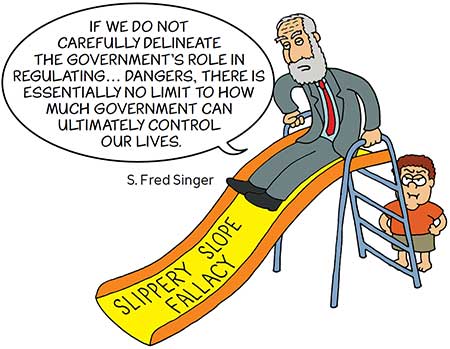
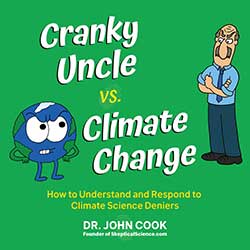 Cranky Uncle vs. Climate Change uses cartoons, climate science, and critical thinking to make sense of climate denial and misinformation. Guided by psychological research into how to refute misinformation, the book embraces a creative approach, using cartoons and visual analogies to make the science engaging and accessible to readers. The book is written and drawn by John Cook, a former cartoonist who now researches climate communication at George Mason University. Cranky Uncle vs. Climate Change will be published by Kensington Books on Feb 25. Sign up for latest Cranky Uncle news at crankyuncle.com.
Cranky Uncle vs. Climate Change uses cartoons, climate science, and critical thinking to make sense of climate denial and misinformation. Guided by psychological research into how to refute misinformation, the book embraces a creative approach, using cartoons and visual analogies to make the science engaging and accessible to readers. The book is written and drawn by John Cook, a former cartoonist who now researches climate communication at George Mason University. Cranky Uncle vs. Climate Change will be published by Kensington Books on Feb 25. Sign up for latest Cranky Uncle news at crankyuncle.com.
Other excerpts from Cranky Uncle vs. Climate Change:
Global warming is happening here and now
Why is the Keeling curve so curvy?
Climate goes extreme!
Posted by John Cook on Tuesday, 21 January, 2020
 |
The Skeptical Science website by Skeptical Science is licensed under a Creative Commons Attribution 3.0 Unported License. |